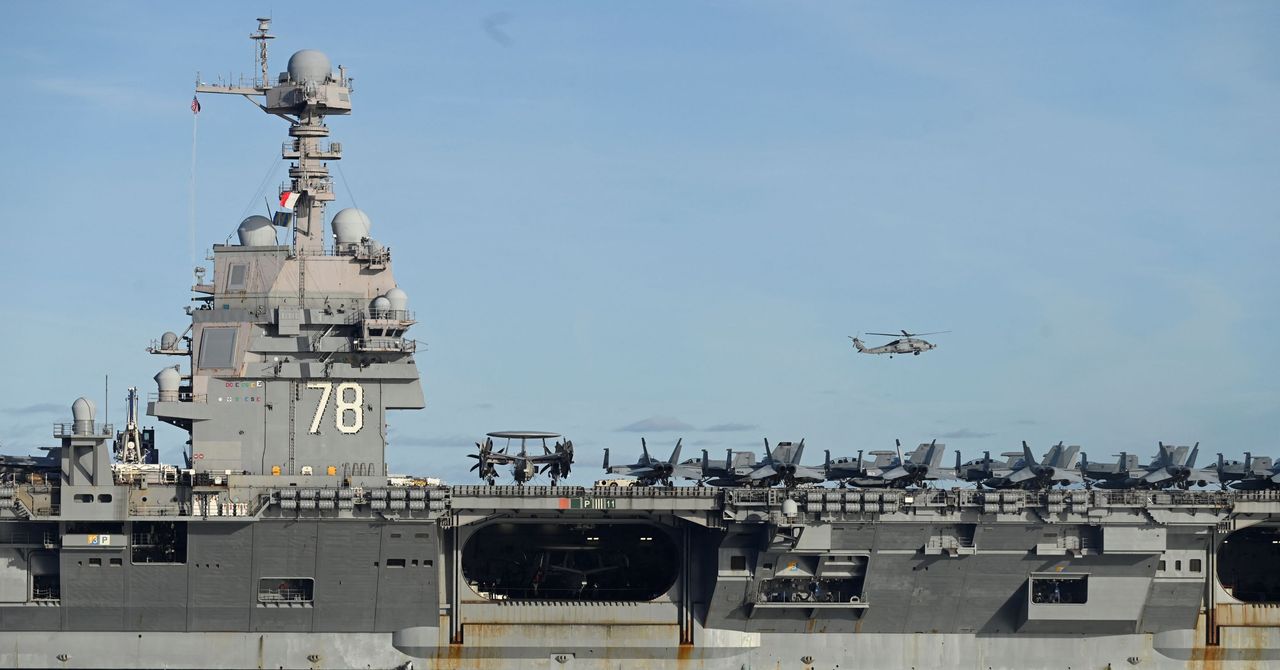USS Gerald R. Ford Deploys to Caribbean Sea to Combat Drug Trafficking
The USS Gerald R. Ford, the U.S. Navy’s most sophisticated aircraft carrier, has set sail for the Caribbean Sea as part of a strategic initiative by the Pentagon to enhance efforts against drug trafficking in South America. This deployment was confirmed late last week by Sean Parnell, Assistant Secretary of Defense for Public Affairs, who shared details via social media.
Enhancing Security in the Western Hemisphere
In his statement, Parnell emphasized that the USS Gerald R. Ford’s deployment will bolster the United States’ capabilities in detecting, monitoring, and dismantling illicit activities that threaten the nation’s security and economic stability. He noted that this move aims to reinforce the security measures in the Western Hemisphere.
Since the previous month, the administration has ramped up its campaign to counter drug trafficking in Caribbean waters, asserting that the actions of various criminal organizations pose significant risks to American citizens. In recent weeks, U.S. military forces have engaged in operations targeting vessels suspected of drug transport, which has heightened diplomatic tensions with countries such as Venezuela and Colombia.
Escalation of Military Presence
The arrival of the USS Gerald R. Ford marks a notable escalation in U.S. military engagement in the region, a situation that experts suggest may further intensify hostilities. This aircraft carrier is recognized not only for its cutting-edge technology but also for its substantial construction costs, estimated at $13 billion, making it one of the most advanced vessels in the world.
Advancements in Carrier Technology
As the first of a new generation of aircraft carriers designed to succeed the Nimitz class—dominant in the U.S. fleet since the 1970s— the USS Gerald R. Ford incorporates 23 new or enhanced systems aimed at optimizing operational performance, communication, and stability. According to Naval Technology, this vessel is part of the CVN-21 Aircraft Carrier Program developed by Huntington Ingalls Industries’ Newport News Shipbuilding division.
With a displacement of nearly 100,000 tons, the ship measures 333 meters in length and 40.8 meters in width, featuring a flight deck that spans 78 meters. Notably, one of its significant innovations is an advanced nuclear propulsion system that enhances power generation and distribution by 150% compared to its predecessors. This system, developed by Northrop Grumman, is composed of two reactors and a zonal electrical distribution network, allowing for up to 20 years of operation without refueling.
Revolutionary Launch System
The USS Gerald R. Ford also employs the Electromagnetic Aircraft Launch System (EMALS), a cutting-edge mechanism designed to replace traditional steam catapults. This system utilizes a linear electromagnetic accelerator to enhance the acceleration of both manned and unmanned aircraft, enabling launches at greater speeds and with heavier payloads. This advancement significantly extends the range and effectiveness of aircraft deployed from the carrier.
As the USS Gerald R. Ford embarks on this mission, its advanced capabilities are positioned to make a substantial impact in the ongoing fight against drug trafficking in the Caribbean, reflecting the U.S. commitment to safeguarding the security of its territories and the stability of the Western Hemisphere.




